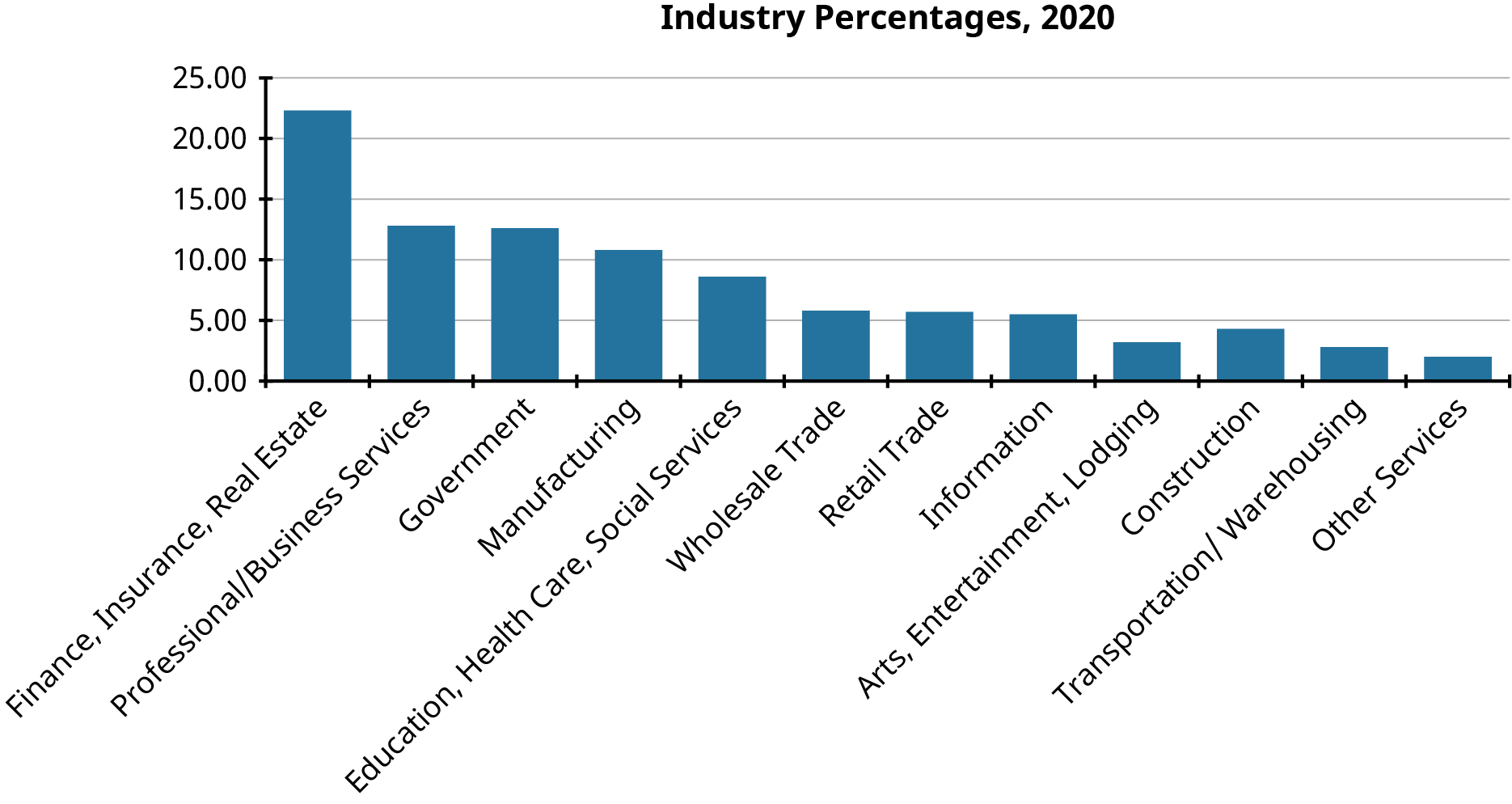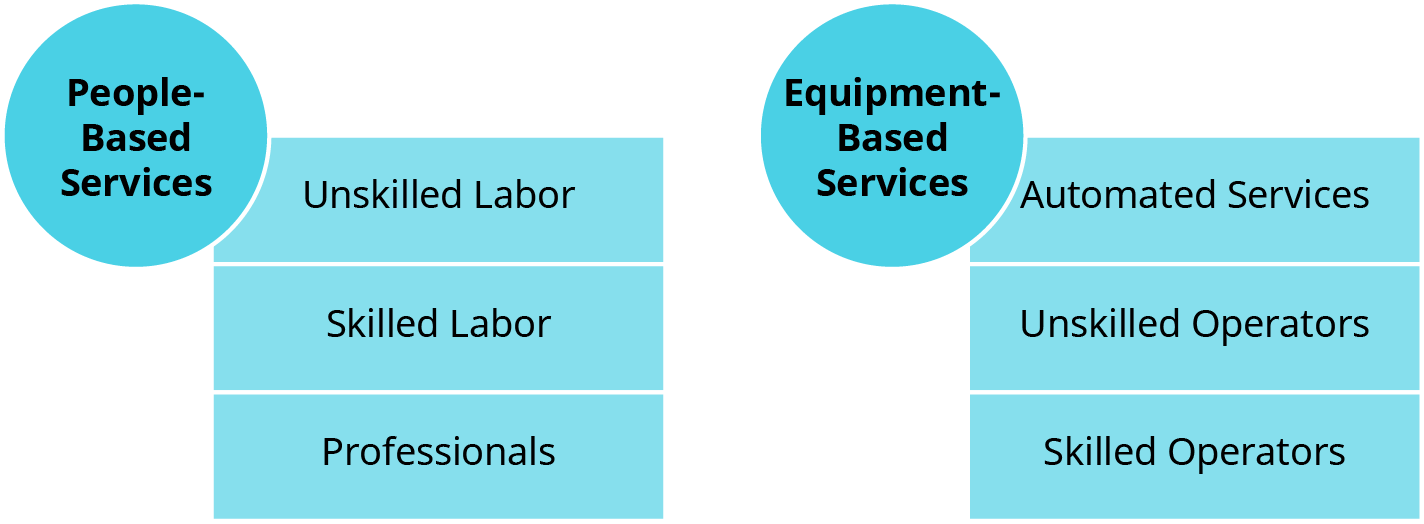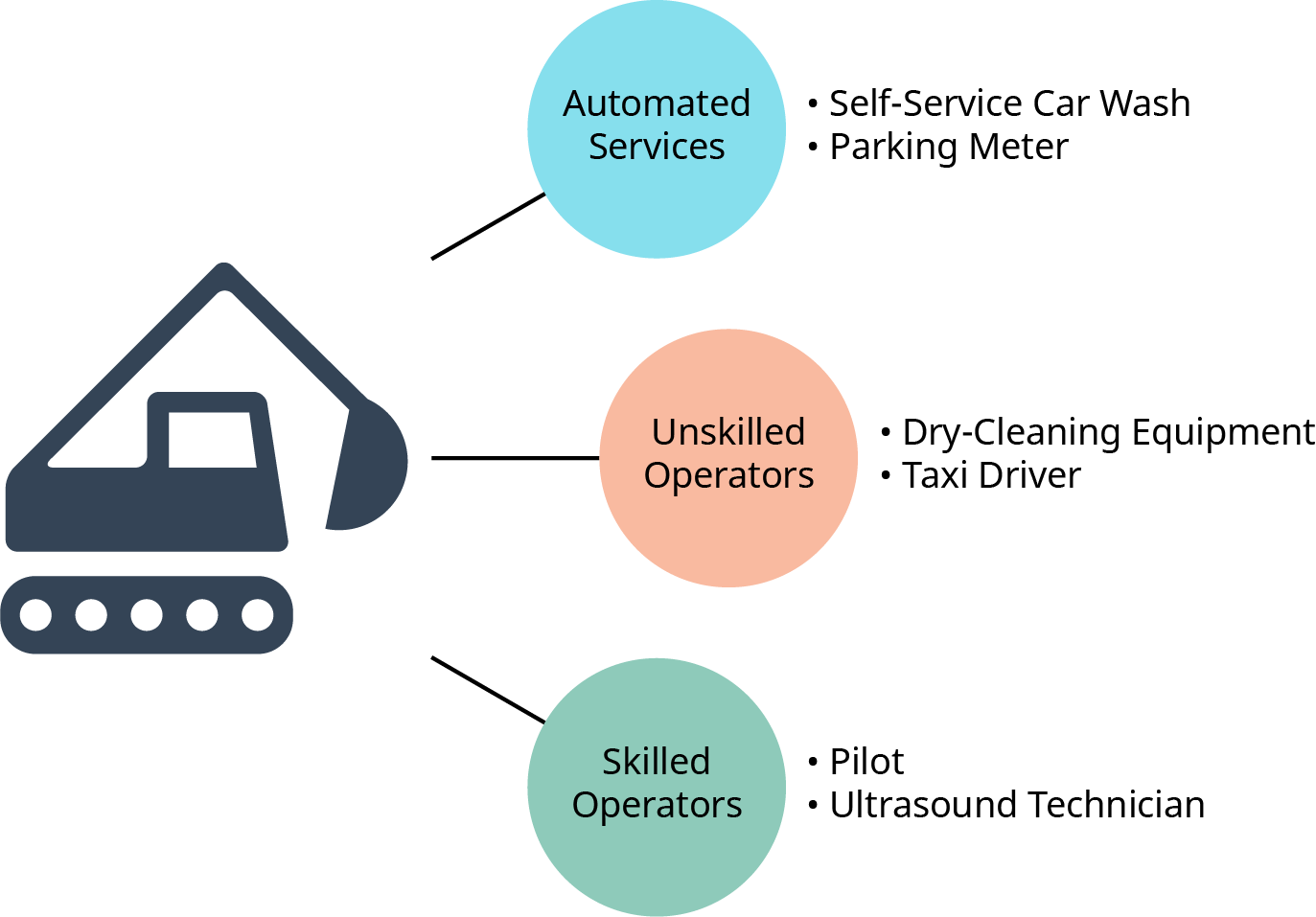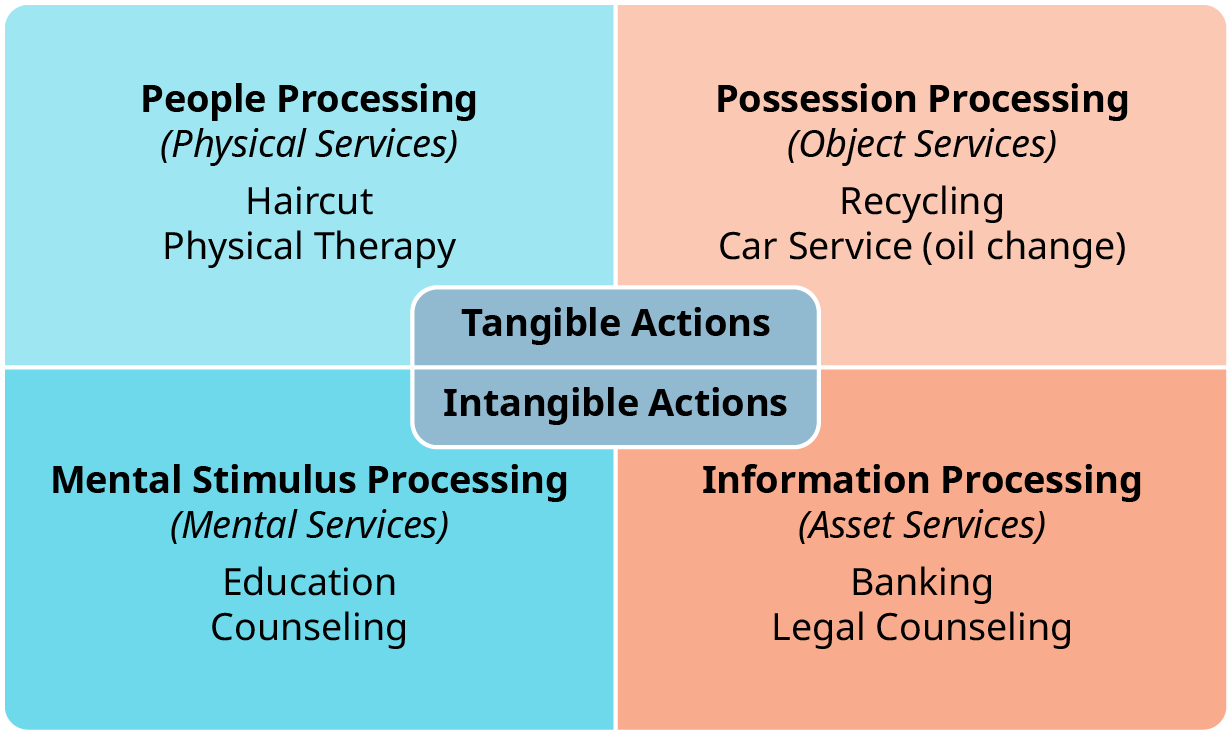Classification of Services
Learning Objectives
By the end of this section, you will be able to:
- Define services.
- List the classification of services.
- Describe the characteristics of services.
Services Defined
You may have heard that the United States’ economy is primarily considered a service economy. But do you know why this is? Figure 11.2 provides the answer. It outlines the percentage each industry contributed to the gross domestic product (GDP) in 2020.3 (A quick refresher from your economics course: the GDP is a measure of the total monetary value of all finished goods and services generated within a country’s borders during a specified period of time.) Which industries are the largest contributor to the GDP? Service industries. (Note that this figure does not include smaller industries such as utilities, or mining and agriculture.) When you total the service industries, they make up a whopping 67 percent of GDP versus only 10.8 percent for manufacturing.
Figure 11.2 Percentages Added by Industry to the US GDP in 2020 (data source: BEA; US Department of Commerce; attribution: Copyright Rice University, OpenStax, under CC BY 4.0 license)
In a nutshell, services are the nonphysical, intangible economic activities. On the other hand, physical goods are the things we can touch or handle, commonly called tangibles. Do you realize that, as you read this textbook, you’re participating in the services sector of the economy? That’s because education is considered part of the service sector. The service sector also includes things like banking, medical treatment, transportation, insurance, and many more categories. Based on the fact that the majority of contributions to the GDP in the United States are services, and more than half of the country’s workforce is employed in producing “intangibles,” it’s critical to understand this important sector from a marketing perspective.
Consider the challenges to marketers when selling services as opposed to products. A consumer can’t touch or see the service before they purchase, so it’s difficult to examine or evaluate benefits. Think about it: you can’t take a service out for a test drive the way you might if you were buying a new car. Yet it’s just as crucial for organizations that provide services to build brand awareness and brand loyalty.
Classification of Services
Services are classified as people-based services or equipment-based services. And within those classifications, there are subcategories (see Figure 11.3).
Figure 11.3 Services Classifications (attribution: Copyright Rice University, OpenStax, under CC BY 4.0 license)
People-Based Services
People-based services are when people primarily deliver the service, rather than equipment or machinery (see Figure 11.4 for examples). It’s the individuals delivering the service, and the knowledge and skills that they possess, that add value and allow the service to be performed. People-based services can be broken down further into these subcategories:
- services provided by unskilled labor: parking lot attendants, babysitters, and janitors
- services provided by skilled labor: plumbers, caterers, and hairstylists
- services provided by professionals: doctors, attorneys, college professors, and accountants
Figure 11.4 People-Based Services (attribution: Copyright Rice University, OpenStax, under CC BY 4.0 license)
Equipment-Based Services
Equipment-based service firms utilize equipment, machinery, and other forms of technology to perform service tasks (see Figure 11.5). Similar to people-based services, equipment-based services can be further broken down into subcategories:
- automated services: car washes and parking meters
- equipment-based services operated by relatively unskilled operators: dry-cleaning equipment
- equipment-based services operated by skilled operators: X-ray machines and ultrasound equipment
Figure 11.5 Equipment-Based Services (attribution: Copyright Rice University, OpenStax, under CC BY 4.0 license)
There is another way to categorize services, according to well-known author and professor Christopher Lovelock (1940–2008). He proposed four broad categories of services:
- people processing: services toward people’s bodies
- possession processing: services toward possessions
- mental stimulus processing: services toward people’s mind
- information processing: services toward intangible assets4
In Figure 11.6, the categories are defined on a two-dimensional matrix, wherein one of the dimensions is the direct recipient of the service and the other is the nature of the service act.5
Figure 11.6 Lovelock’s Categories of Service (attribution: Copyright Rice University, OpenStax, under CC BY 4.0 license)
People Processing
In people processing services, the customer is a direct recipient of the service, and the production and consumption of the service are simultaneous. Consider examples of services where you must be present in the service facility in order to interact with the service provider and receive the service, such as barbershops or hair salons, physical therapists’ offices, or restaurants.
Possession Processing
The difference between people processing and possession processing is that the service is directed toward the customer’s physical possessions. In other words, production and consumption are separate. Your only involvement is dropping off the item that requires service or repair and explaining the problem. For example, once you have taken your car in for an oil change, you do not need to be physically at the location for the oil change to occur. Similarly, once you’ve dropped your clothes off at the dry cleaner’s, you don’t need to be physically present when the cleaning process is performed. These services are tangible because the direct recipient is one of your possessions rather than you as a person.
Mental Stimulus Processing
In its simplest explanation, mental stimulus processing is when the services interact with your mind rather than your body. Time and mental effort are required from the customer to receive this type of service. What you’re doing right now—reading this textbook—is a prime example of mental stimulus processing. Other examples include psychotherapy or counseling services. The key here is that services rendered in this category are intangible.
Information Processing
Information processing is the most intangible form of service, although it can be transformed into a tangible service output like reports, books, letters, DVDs, etc. Some examples of information processing services are things like meeting with your financial advisor regarding investment advice, legal services, and banking.6






